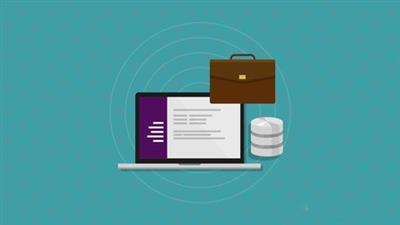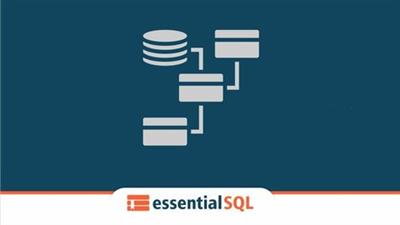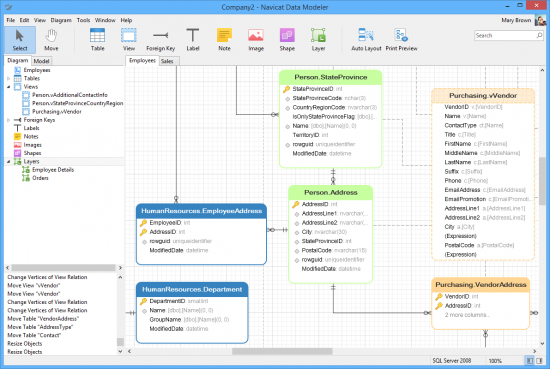
Mastering Data Modeling Fundamentals
Posted on 30 Mar 01:09 | by AD-TEAM | 30 views

Mastering Data Modeling Fundamentals
MP4 | Video: h264, 1280x720 | Audio: AAC, 44.1 KHz
Language: English | Size: 626 MB | Duration: 2h 58m
Entity-Relationship Techniques and Best Practices
What you'll learn
Master the techniques needed to build data models for your organization.
Apply key data modeling design principles through both classic entity-relationship notation and the "crow's foot" notation.
Build semantically accurate data models consisting of entities, attributes, relationships, hierarchies, and other modeling constructs.
Convert conceptual data models to logical and physical data models through forward engineering.
Requirements
Students only need a basic understanding of data management concepts and constructs such as relational database tables and how different pieces of data logically relate to one another. The course content builds on these rudimentary ideas; no other prerequisites are needed.
Description
If you are a current or aspiring IT professional in search of sound, practical techniques to analyze and model data as part of the overall data management lifecycle, this is the course for you.
During the course, you'll put what you learn to work and define sample data model segments in both "classic" entity-relationship notation and also the "crow's foot" notation to help emphasize the best practices and techniques covered in this course. Each section has either scenario based quiz questions or hands on assignments that emphasizes key learning objectives for that section's material. This way, you can be confident as you move through the course that you're picking up the key points about data modeling.
To build this course, I drew from more than 30 years of my own work involving data modeling and related disciplines. Long ago, in the late 1980s, I was a software engineer at what was then the world's second largest computer systems vendor, Digital Equipment Corporation. I wrote software for a "conceptual and logical database design tool" - in other words, a data modeling tool. My own consulting firm, Thinking Helmet, Inc., specializes in data management and analytics-focused disciplines for which data modeling is essential. I've rolled up my sleeves and personally tackled every aspect of what you'll learn in this course. I've even learned a few painful lessons, and have built a healthy share of "lessons learned" into the course material.
In this course, I take you from the fundamentals and concepts of data modeling all the way through a number of best practices and techniques that you'll need to build data models in your organization. You'll find many examples that clearly demonstrate the key concepts and techniques covered throughout the course. By the end of the course, you'll be all set to not only put these principles to work, but also to make the key data modeling and design decisions required by the "art" of data modeling that transcend the nuts-and-bolts techniques and design patterns.
Specifically, this course will cover
Foundational data modeling concepts and fundamentals
The symbiotic relationship between data modeling and database design (Hint: the two are not exactly the same!)
Different modeling approaches, techniques, and notations that you can put to work
The fundamentals of entities, attributes, and relationships, as well as how to express these concepts in multiple modeling notations
How we incorporate real-world complexities into our entities, attributes, and relationships
The data modeling lifecycle that includes forward engineering a conceptual data model to a logical and then a physical model, as well as how we reverse-engineer a physical data model back to the conceptual level
Different software-based approaches for data modeling tools
Data modeling is both an art and a science. While we have developed a large body of best practices over the years, we still have to make this-or-that types of decisions throughout our data modeling work, often based on deep experience rather than specific rules. That's what I've instilled into this course: the fusion of data modeling art and science that you can bring to your organization and your own work. So come join me on this journey through the world of data modeling!
Who this course is for
A business analyst, data engineer, or database designer, currently with little or no exposure to or experience with data modeling, who desires to build a personal toolbox of data modeling best practices and techniques.
After completing this course, you will be ready to begin working on real-world data modeling projects, either with expanded responsibilities as part of an existing role or to find a new position involving data modeling. Example positions include database designer, conceptual data modeler, database engineer, and business analyst with an emphasis on data requirements.
Download from RapidGator
Related News
System Comment
Information
 Users of Visitor are not allowed to comment this publication.
Users of Visitor are not allowed to comment this publication.
Facebook Comment
Member Area
Top News



